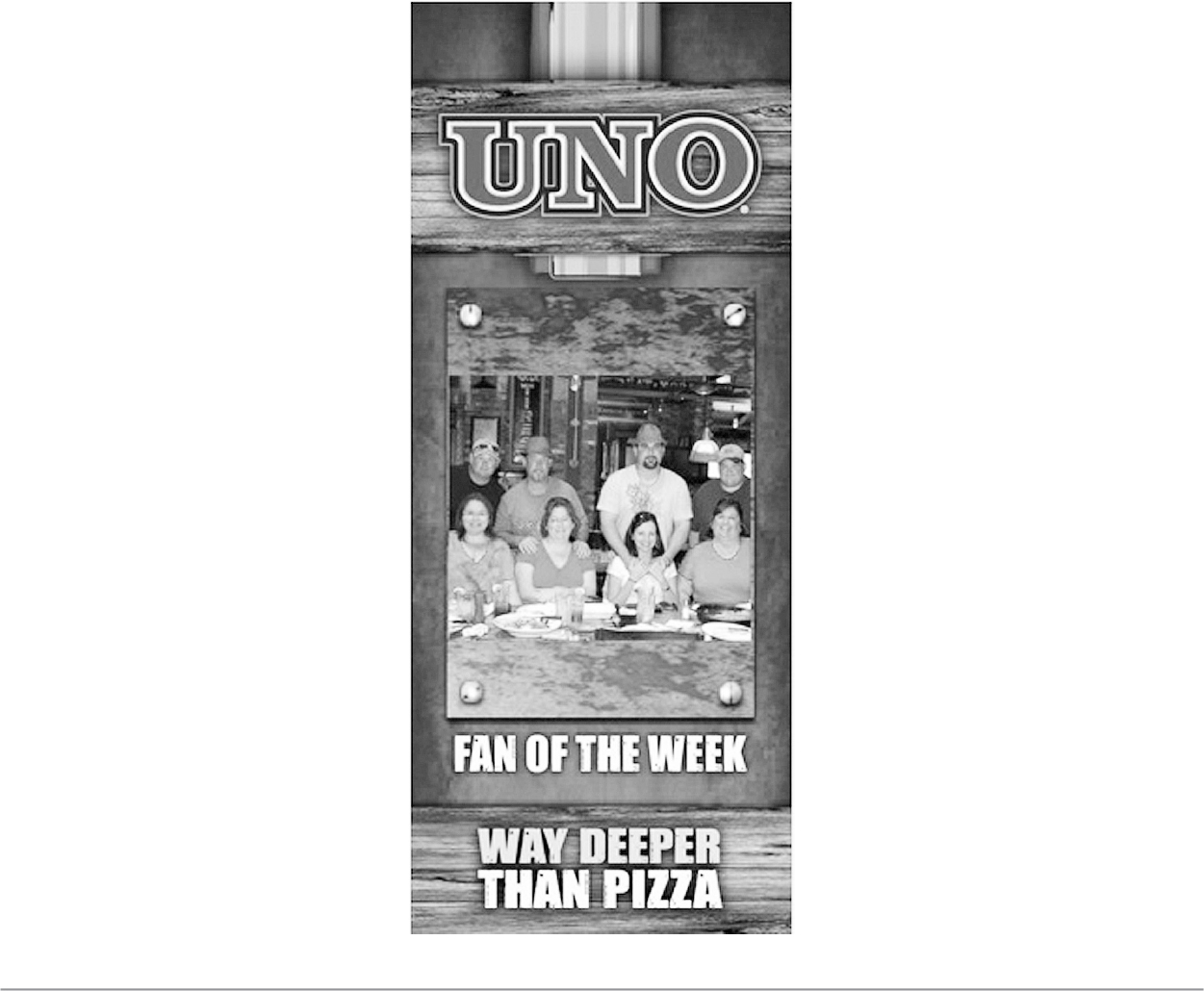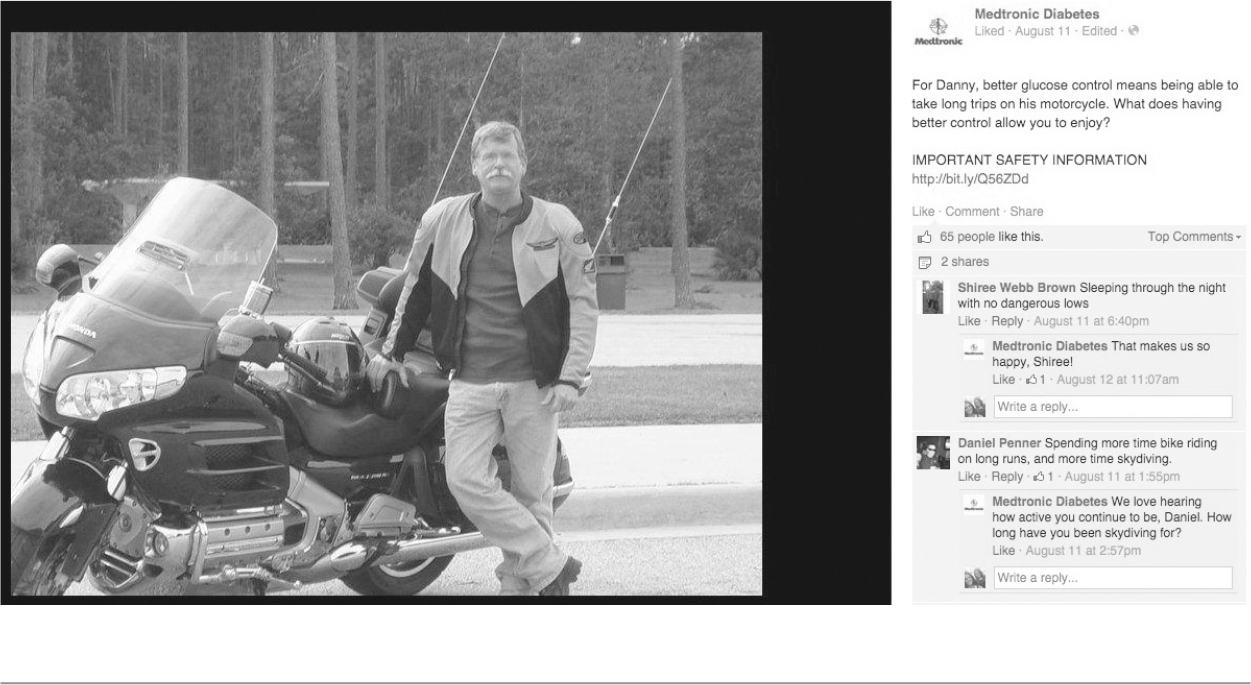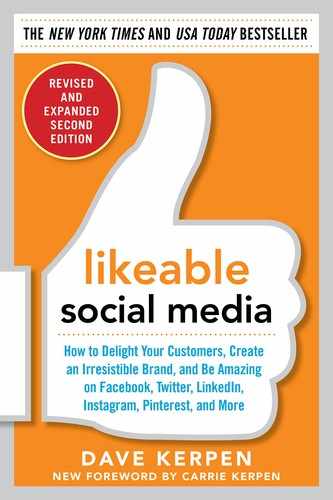
CHAPTER 13
Inspire Your Customers to Share Stories
It was November 16, 2008. A tweet from @MeshugAvi led to a phone call, and suddenly, my wife and I were being pitched on participating in a social media fundraiser that was about to launch. The plan was still pretty loosely defined at the time, but it seemed awfully exciting: people would be asked to share on Twitter what they were thankful for around Thanksgiving, and they would have the opportunity to give a donation to the nonprofit behind the event, Epic Change. The nonprofit seemed great. Its mission is to use storytelling to support projects dealing with people in need who can be helped through financial loans. In this Thanksgiving program, the organization’s hope was to use money raised to support Mama Lucy, a chicken farmer in Tanzania who had started a school.
But moreover, the project and its leader, Epic Change cofounder Stacey Monk, were oozing with inspiration. So we volunteered to help with word-of-mouth and social media marketing, and we began to figure out the details with Stacey for what we would call TweetsGiving. Epic Change’s plan was to launch and execute the program over the 48-hour period leading up to Thanksgiving Day in the United States, which was just seven days from our first discussion with organizers Stacey Monk and Avi Kaplan. They scrambled to get a website together, and they planned to get the word out to influential people on Twitter and Facebook, who would hopefully be as excited about the project as we had been and would not only share their stories of gratitude but also spread the word to their online friends and followers.
TweetsGiving came quickly, and it became one of the first successful fundraisers based on social media. Over that 48-hour period in 2008, thousands of people learned of Mama Lucy’s story, and they shared their own stories of thanks through tweets, Facebook messages, blogs, and videos. Participants expressed gratitude for their friends and family, their colleagues and staff, their students and teachers, and anyone and everyone important to them. It was amazing to see so many people share stories in just 140 characters in tweets such as, “Thanks for all you have done for me & given me, mom. RIP, greatest mama ever. #tweetsgiving.”
Hundreds of people also donated between $1 and $100 to an organization that, prior to that week, none of them had even heard of. In just 48 hours, TweetsGiving raised more than $11,000 in online donations in what would become one of the first successful social media fundraisers. For an organization with no previous database of donors, contacts, or prospects to speak of and for a campaign that was put together from start to finish in seven days, this was an incredible accomplishment.
TweetsGiving 2009, with a little bit more time to plan, raised $35,000 in just 48 hours, and the event in 2010 raised even more money. The enormous success of the project demonstrated the vast power of social media to spread the word quickly about causes, but it also showed the unquestionable power of using social media to inspire people to share their own stories. Just five years later, the ALS Ice Bucket Challenge raised over $100 million in just three months by leveraging social media storytelling, Facebook videos, and YouTube.
THERE’S NOTHING NEW ABOUT THE POWER OF INSPIRATION EXCEPT THE CHANNEL
![]()
The only thing that’s better than sharing your company’s stories on social networks is inspiring your customers and fans to share theirs. TweetsGiving wasn’t powerful because of its own story, incredible as it was, but because of the thousands of stories it elicited. Inspiring your customers to share their stories is nothing new or unique to social media. In fact, this idea has always been a key component of word-of-mouth marketing. Social media just allows those stories to spread faster and farther than ever before.
Even 10 years ago, if you wanted to tell your friends about an experience you had with a company, you would call one or two of them on the phone and chat with them. Maybe, if you were particularly inspired, you could share your experience with as many as five or six friends. Today, if you want to tell others about an experience you have had with a company or product, you can update your Facebook status, and with one click, share a story or information with dozens or even hundreds of friends. Essentially, not much has changed from 5 years ago, but in terms of the speed and size of the audience you can disseminate information to, the ante has been upped. A lot.
BUILD WORD OF MOUTH INTO YOUR PRODUCTS AND SERVICES
![]()
The most effective way of inspiring your customers to tell others about you is to have buzz-worthy, talkable products and services in the first place. These products or features are the types that truly make you say, “Wow!” as a customer or in their very nature create passionate users. Take Facebook itself, for instance. It grew from several hundred users to several hundred million users in just five years, not because of any clever marketing whatsoever but simply because it had built amazing products that people loved and have continued to spread the word about. In fact, when Facebook hit 500 million users in 2010, it celebrated by launching Facebook Stories (FacebookStories.com), which allows people to share ways in which they’ve used Facebook to reconnect to long-lost friends, reunite with a high school sweetheart, or start a political movement, among many others.
Even if you’re not into Apple products yourself, surely you know a bunch of people who are Apple addicts. They talk about Apple, they write about Apple, they share about Apple, and some of them even sing about Apple. Again, these fans and followers praise the company not because of any marketing initiatives but because its products and features inspire passionate, loyal customers.
It’s not always about the products either. Take Zappos.com, for instance. It sells shoes. But anyone who has ever ordered from Zappos.com knows that it doesn’t really sell shoes—it sells amazing customer service. It sells surprising overnight delivery and free returns. It sells happiness. And it inspires people to share their stories directly or indirectly about Zappos.com every single day.
Do you have a “wow” factor for any of your company’s products and services? Is there any aspect of an experience with your company that really knocks your customers’ socks off and moves them to tell a friend, or 130 Facebook friends, about you? If not, what little can you do to increase the likelihood of creating “wow” moments? What about you is talkable right now?
FIND THE CUSTOMERS YOU INSPIRE THE MOST, AND GIVE THEM THE TOOLS TO SHARE
![]()
Although most people would argue that it’s worth doing, not every company is actually able to inspire all of its customers the way organizations like Facebook, Apple, and Zappos.com do. The challenge, then, is to find which of your customers are most inspired by you and what you have to offer them. Then you need to give them the tools and opportunities to share their stories. The social networks themselves allow the stories to take off.
The Fiskateers: A Crafty Use of Social Media for Sharing
Remember, the importance of inspiring stories didn’t just start with social media. A favorite pre-Facebook example of this is the Fiskateers. Fiskars, most famous for making scissors, wanted to inspire word-of-mouth marketing opportunities. With the help of its excellent word-of-mouth agency, Brains on Fire, it identified crafters as its most passionate users and “talkers.”
In 2005, Fiskars created a crafting community called the Fiskateers. The company gathered the women most passionate about crafting and scrapbooking together, offline, and gave them tools to connect with one another. Of course, the company never told them to promote Fiskars scissors, but as the community grew from year to year, passionate Fiskateers also became passionate Fiskars advocates. Today, the community exists both offline and online, and there are now thousands of people in the Fiskateers community (Fiskateers.com). Many of the members build relationships with one another and share stories through Facebook and Pinterest, while still others bond over crafting at various online and offline events.
Who Are Your Crafters?
Who are your most passionate customers? Is it teenagers, perhaps? Or moms? How about hockey fans? Or CEOs? Maybe music-loving baby boomers? Whatever your customer base, there’s a subset of them that includes your raving fans. If you can find these fans, connect them, and inspire them, you have the potential to start a powerful word-of-mouth movement. If you haven’t found them yet, fortunately, social media provides you with tools and opportunities that were previously unavailable to do so. All you really need to do is listen to your customers, ask them questions, and get them involved. You can even use Facebook to find your strongest, most vocal supporters.
Keep in mind that you’re not trying to find the largest subset of your customers, but the most passionate. For every company, these supporters exist, even if they are as specific as male college seniors, female golfers, young mountain bikers in Texas, or chief technology officers.
Once you’ve identified your most passionate subset of customers, you’ll want to give them as many tools and opportunities as possible to share their stories about you on social networks. A little recognition or encouragement of these customers can go a long way, and once people start seeing other customers posting their stories, it’ll remind them of their own experiences that they might want to share. You may also want to consider the influence of this subset of customers and who among them is most influential. The reality is that someone with 4,000 Facebook friends sharing a story about you is likely much more valuable to you than someone with 40 friends sharing a similar story about you. Remember to check people’s klout! (https://klout.com).
RECOGNITION INSPIRES STORIES
![]()
People love rewards and recognition, even when they’re not monetary in nature. On Facebook, for instance, we’ve implemented a lot of Fan of the Week or month initiatives for clients, based on who shares the best story, picture, or video. For example, the Franklin Baseball page (Facebook.com/FranklinSports) selected fans of the week based on people uploading pictures of their kids playing Little League baseball or softball.
Uno Pizzeria & Grill selected fans of the week based on pictures or videos uploaded from restaurant experiences (see Figure 13.1). One Purrfect Place, makers of custom cat boxes, asks fans to post photos of their cats, and it features photos and stories about other people’s cats. Dunkin’ Donuts has steep competition for its Fan of the Week, which is broadcast to its 12 million fans.
FIGURE 13.1 Uno’s Fan of the Week

In general, fans of the week get their profile pictures added to the sponsoring brand’s official pages, which is not only nice recognition for the fans but often leads to those fans sharing the news with their friends. With the average number of Facebook friends per user at 350, and often more active users with even more friends than that, you can imagine how quickly communities can grow around this simple form of recognition.
Prizes Can Inspire Stories Too
Recognition is great, but prizes, including cash, really get people talking. If you can reward your customers with cool, out-of-the-box prizes, you will draw out your most enthusiastic customers to share their experiences. Think “a year’s supply of … ,” or, better yet, “a lifetime supply of … ,” in exchange for the best poem, video, or picture that showcases how someone is using your product.
Unlike contests of old, of course, for which submissions were private and you could showcase top entries only by using them in your advertising campaigns, now, through online social channels, all submissions are public and shareable. If someone uploads an unbelievable or entirely unique video submission to a contest on YouTube, chances are it’s going to get a lot of views, and if someone shares a hysterical photo submission on Facebook, it’s probably going to generate lots of likes and comments.
For big brands looking to give away lots of cash, charitable contests can inspire people to share their stories. PepsiCo diverted a huge chunk of its marketing and advertising budget in 2010 toward Pepsi Refresh, a global giving initiative hosted at PepsiRefresh.com, for instance, asking people to nominate causes they believed in and to share their experiences and stories related to these causes. PepsiCo gave away millions of dollars to community groups throughout the year through Pepsi Refresh, built a huge community of supporters, and created an army of people who associate Pepsi with the idea of not just refreshing your thirst but refreshing the world’s neediest and most deserving.
Medtronic Share Your Story
Medtronic Diabetes is a world-leading medical device company dedicated to improving the lives of people with diabetes through its core products: insulin pumps and continuous glucose monitoring devices. Medtronic launched its Facebook and Twitter accounts in 2012. As a highly regulated brand in the pharmaceutical space, the company’s presence in social media was revolutionary in many ways. However, because many of its indirect (and in some cases, direct) competitors, that is, bloggers, had been able to grow communities, it was critical that Medtronic launch with a campaign that would make a splash and put its customers in the center of everything.
And so Medtronic, along with Likeable Media, introduced a Facebook application designed to inspire loyalty, increase awareness, and cement the company as the branded diabetes destination on Facebook (Figure 13.2). The Share Your Story photo app (launched as the Let’s Build Our Timeline Together app) gave the Facebook community a space for sharing their stories with the brand and with the rest of the community. These personal stories were about memorable moments that were made possible with the help of the types of products Medtronic offers its customers.
FIGURE 13.2 Medtronic’s Let’s Build Our Timeline Together App

Never before had a brand in the healthcare space opened its Facebook page to the stories of its customers, and Medtronic took it one step further. When users submitted their stories, they were added to the social editorial calendar, and each story was shared with the growing Medtronic community. During launch, the app received over 250 submissions of stories and photos (80 percent of which the submitters allowed the brand to share with the rest of the Facebook community).
The stories that were then shared continued to be some of the highest-performing posts on the network, creating a residual storytelling effect as users have left comments about their own personal stories as well as words of encouragement to the individuals featured. From day one, the Medtronic Facebook community was about building a real community with the company’s customers and people affected by diabetes, and the Share Your Story application helped propel them to enormous success.
Uno Pizzeria & Grill Makes a Happy Birthday for One Fan and Inspires Her to Share Her Story
As discussed in Chapter 4, Uno Pizzeria & Grill is probably best known for its Chicago deep-dish pizza but features a full lunch and dinner menu that can be found at 160 Uno locations across 24 states, the District of Columbia, and several other countries. Uno does, however, have just one location in Southern California, which made the following individual experience a lot easier to pull off successfully.
Kimberly Boynton, Uno’s marketing director, ensures that all of the hundreds of monthly comments from more than 100,000 fans are responded to promptly and positively. She looks for interesting stories about customers’ experiences and sees on a daily basis how people feel about Uno’s services, food, and even online presence and social Web community. One fan posted that she loved Uno so much that she was driving two hours to the nearest Uno location in California to celebrate her birthday with family. In addition to responding to the customer with a typical “Thanks for all the Uno love. Have a Happy birthday!” message, Kim decided to take the opportunity to further reward the customer for sharing her strong passion with an attempt at surprise and delight.
One phone call to the restaurant and two hours later, when the customer arrived at the Uno’s location with her family, the staff surprised them upon entering the restaurant with a song and cake.
“How in the world? …” the woman asked.
“You posted on Facebook,” the manager replied with a smile. “Happy birthday.”
Said Kim, “You can’t always give a cake and song to everyone who posts on Facebook. But if you listen carefully, and respond to everyone, and take advantage of opportunities that come up along the way, it can go miles toward building a brand’s reputation.”
That night, using their mobile phones, the family shared their story through pictures of their experience at Uno with friends on Facebook. But in the weeks that followed, the return on investment for this small action really began to take form, as the family actively posted on Uno’s Facebook page, shared a video, and continued to promote the brand. Others were inspired to share their positive experiences and stories as well.
EMOTIONS GET YOUR CUSTOMERS TO SHARE THEIR STORIES
![]()
If you can connect with your customers on a deeper, more emotional level, you’ll be much more likely to inspire them to share their stories about you with their friends, family, and their own fans. Consider your target audience and consumers’ tastes. Identify your most passionate subset of followers or customers; then recognize them and provide them with some type of incentive. What will make them want to become the most vocal supporters of your organization? How can you make them really happy, or thankful, or appreciative, or excited? How can you make them say, “Wow!”? How can you be a part of their stories?
